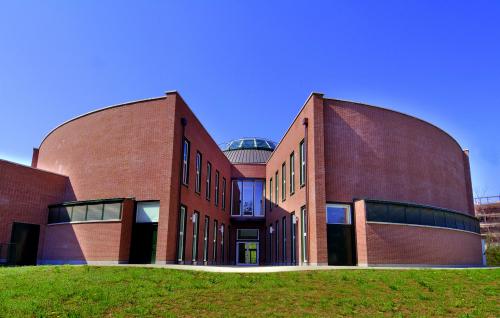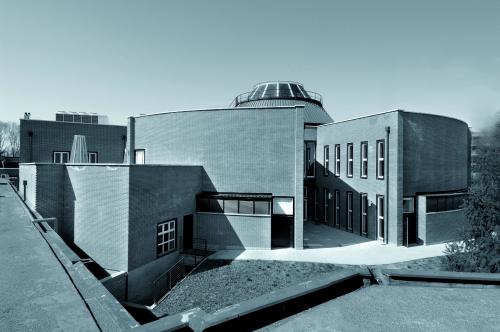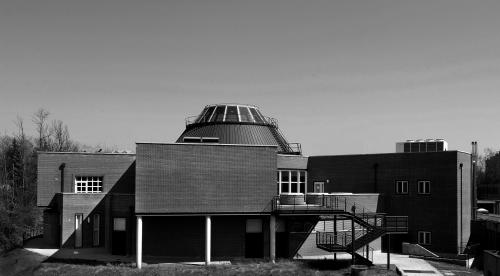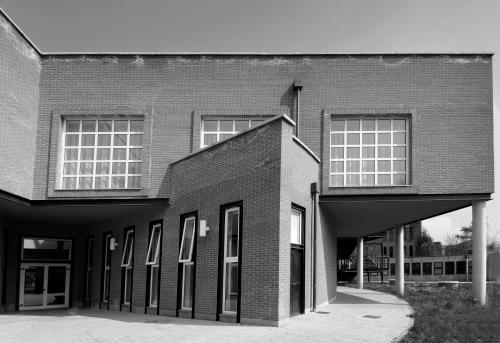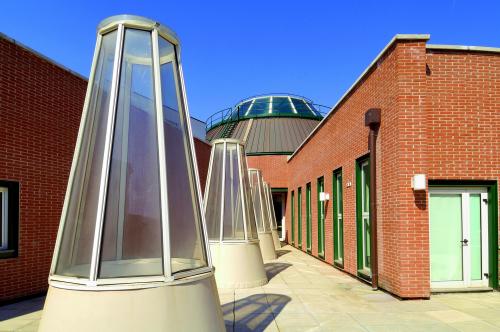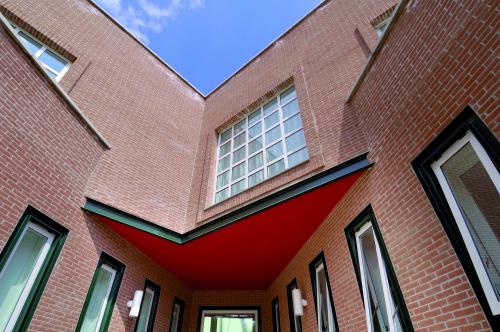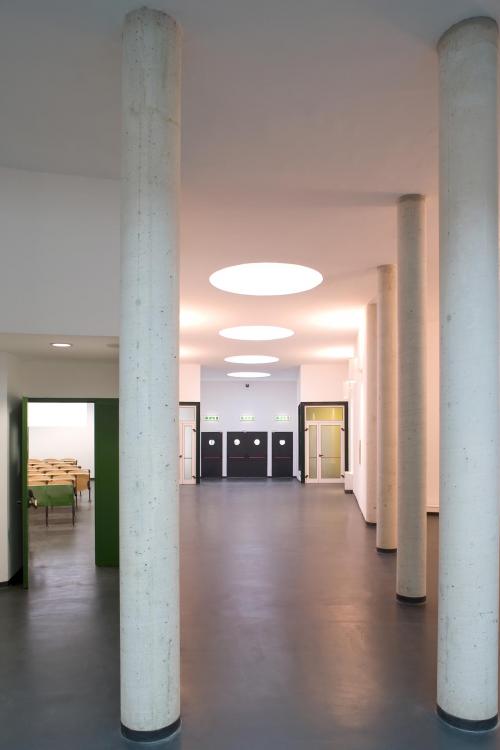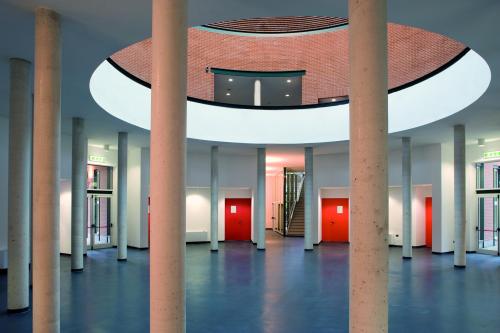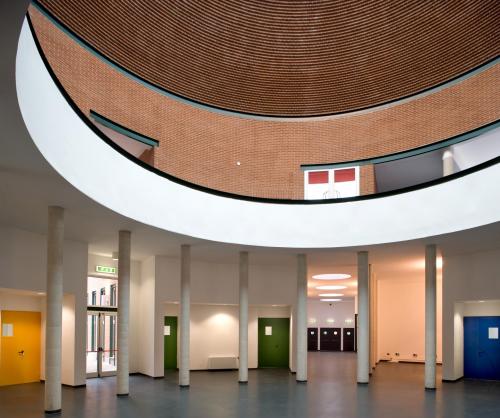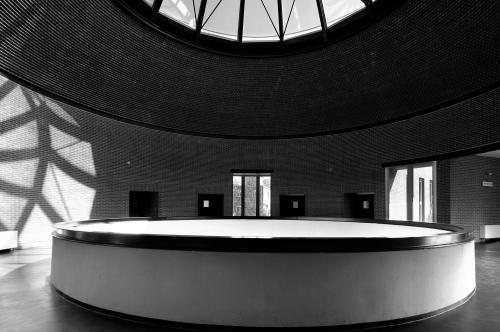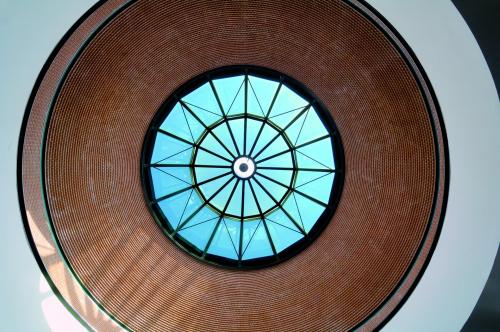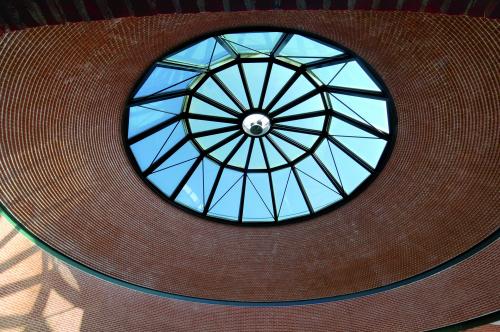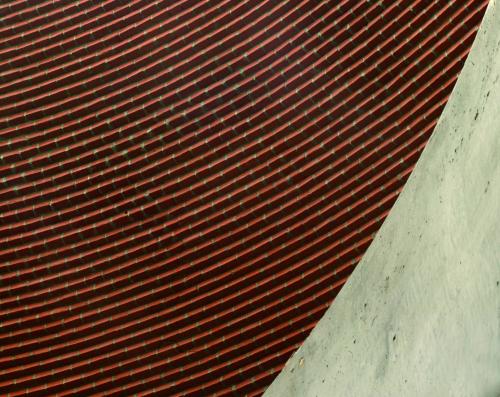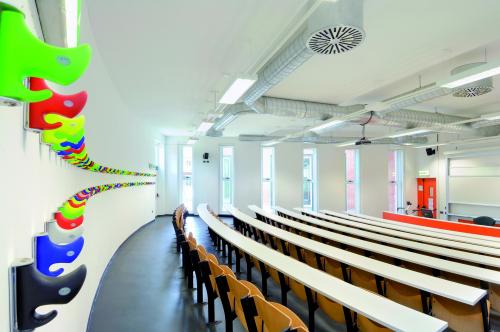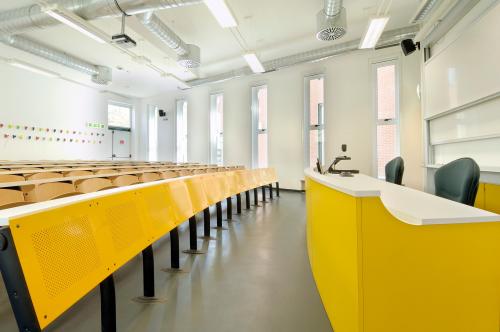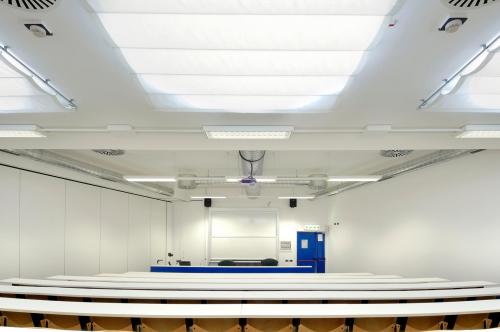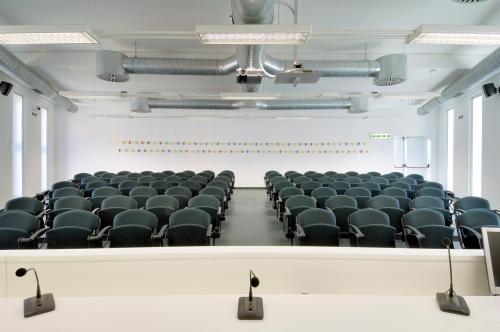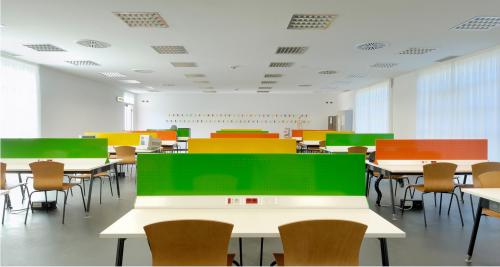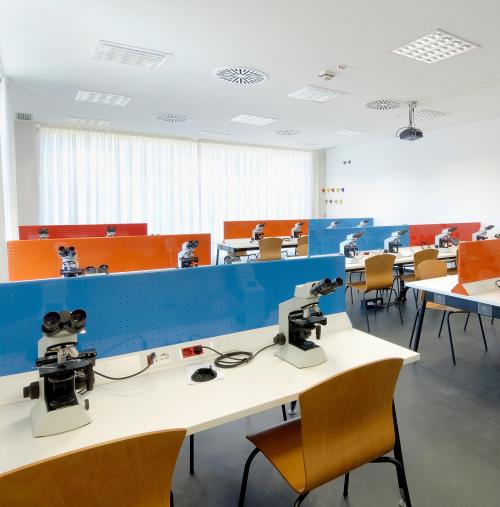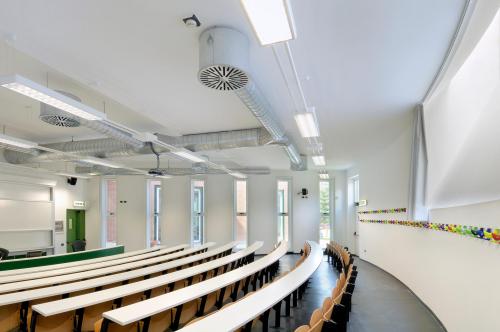architecture
II Facoltà Medicina e Chirurgia - Orbassano / Torino
Polo didattico della II Facoltà di Medicina e Chirurgia
Orbassano (Torino)
cantiere: 2002-2005
Il nuovo fabbricato sorge su una piccola collina all’interno del comprensorio ospedaliero San Luigi Gonzaga, e costituisce il polo didattico della Seconda Facoltà di Medicina e Chirurgia dell’Università degli Studi di Torino.
L’edificio, a due piani fuori terra ed un piano quasi completamente interrato ad uso autorimessa, si sviluppa a pianta centrale. Attraverso un percorso articolato sia “prospetticamente” da muri convergenti verso il centro della fabbrica, che da una teoria di colonne, ed illuminato naturalmente da una serie di lucernari conici, si giunge ad una hall centrale dalla quale si raggiungono sei aule disposte a raggio. Sull’asse verticale della hall si imperniano: al primo piano un’area di distribuzione circolare; in copertura una grande cupola tronco-conica. La cupola, rivestita esternamente in rame, all’interno è costruita in mattoni tipo a mano faccia-a-vista posati orizzontalmente uno sull’altro sfalsati a scalare verso il centro, e si stringe su un grande lucernario zenitale di acciaio e vetro.
Al piano terreno sono allocate, oltre alle sei aule radiali da cento posti (due delle quali collegabili a formare un unico auditorium), la segreteria con annesso locale informazioni, i servizi igienici e l’area caffetteria.
Al primo piano incontriamo la sala docenti (con bagni indipendenti), il locale editing, le sale studio (con area per i distributori automatici di bevande), un’aula seminari, una sala informatica ed i servizi igienici.
Il volume delle sale studio, in parte in aggetto rispetto ai locali sottostanti, rompe - sul fronte sud - la centralità dell’organismo.
Il nuovo fabbricato sarà accessibile: dall’esterno, tramite la strada veicolare ovest del comprensorio; dall’interno, per mezzo della rete dei corridoi pedonali del plesso ospedaliero. E’ previsto il collegamento con la Fondazione Cavalieri Ottolenghi attraverso una passerella vetrata chiusa, galleria aerea in carpenteria metallica e vetro strutturale.
La “continuità” del nuovo fabbricato nel contesto ambientale costruito si attua, principalmente, con l’impiego per la cortina esterna - la pelle dell’edificio - di una muratura faccia-a-vista.
The building is in the ‘university’ section of the San Luigi Gonzaga hospital district of Orbassano, on the outskirts of Turin. It rises around a central axis crowned by a big truncated cone dome that covers the colonnaded and balustraded circular hall.
The dome consists of different shells: the spectacular inner one is made with overlapping bricks, each one jutting out over the other and which stay in place because of their shape. The building has no facade: it is a changing play of volumes in space, which may be rhetorically defined as an acropolis of knowledge, or pantheon, or cultural starship.
The circle of the basement floor is divided into sectors (slices of cake) on the ground floor, while the first floor breaks up into protruding-receding volumes. The internal entrance way narrows in perspective toward the central hall (like St Peter’s square, Rome): the solid wall at a certain point changes into a straight colonnade before dissolving into the central space of the hall, or curving into the colonnade of the hall itself.
Considerable attention has been given to light (which enters in various ways: cylindrical summit skylights, conical summit skylights, curved sloping skylights, straight vertical windows, curved vertical windows, truncated cone dome, etc.) and colour (in reference to the lecture halls; by theme in the four toilets: the four seasons).
The ‘figures’ in the design always contain their opposites: solid is followed by space; from inside you go out and vice versa; a colour has its complementary colour as a counterpoint.
The ground floor is dedicated to general teaching, to large numbers of pupils, to group meetings; the first floor is given over to applied teaching, individual study, computer connection with the world and breaks for thinking and relaxation. It is a teaching plant that considers every part of a long work-study day, in a unit that is fully autonomous but closely connected to hospital life, that is, the current or future world of work.
A suspended passageway straddling the road at the first floor will physically sew this ‘citadel of teaching’ to that of advanced neuroscientific research: the Istituto della Fondazione Cavalieri Ottolenghi. The new building for teaching and the one for research emerge with volumes opposite those of the hospital complex: a dialogue between different forms to mark different vocations and uses. But while the design of figures in the round, fractured by volumes in almost spontaneous germination, refers to the diversity of function and autonomy, the ‘skin’ of the building, the materials used (bricks, windows), reconnect the formal break and recall the symbiosis of human and professional resources between teaching activity and hospital activity.
